Namibia’s Fairy Circles
Fairy circles are circular patches of land barren of plants, varying between 2 and 15 meters in diameter, often encircled by a ring of stimulated grass growth. In 2014 fairy circles were first discovered outside of Africa, 15 kilometers outside of the town Newman in the Pilbara of Western Australia.


There has long been debate about the causes of the circles. The investigation and development of theories have included numerous theories, both mundane and supernatural. One favored assumption is that the sand termite _Psammotermes Allocerus_ is responsible, whereas in the oral myths of the Himba people these barren patches are said to have been caused by the gods, spirits and/or natural divinities.
The Door to Hell
This Door to Hell may be found in Turkmenistan, a gas fire that was accidentally ignited by scientists in 1971 and is still burning.
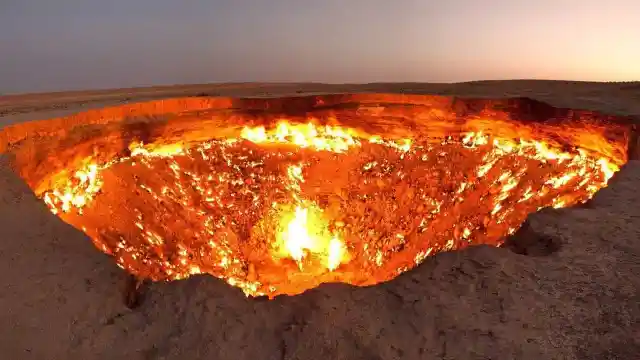
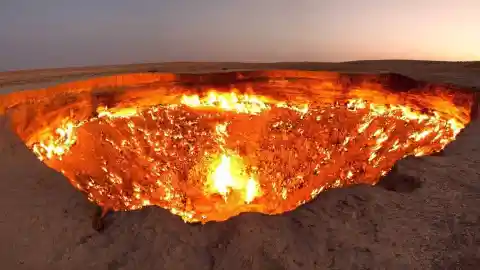
The diameter of the crater is 69 meters, and its depth is 30 meters. Since 2009, more than 50,000 tourists have visited it.
Flammable Ice Bubbles
This lake consists purely of methane bubbles that are trapped beneath the ice layer.
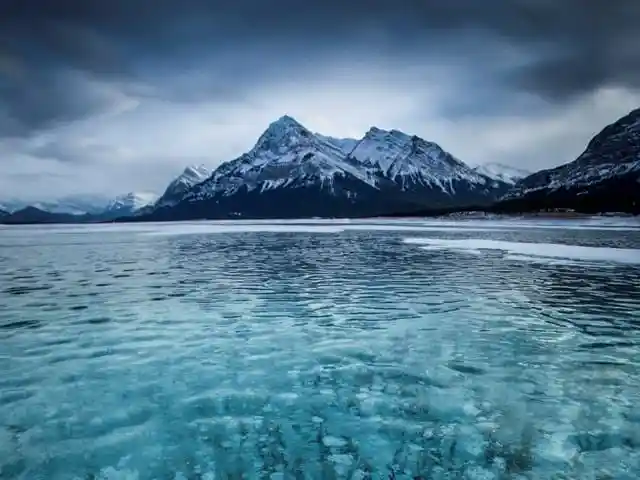

Methane bubbles form in bodies of water when dead organic matter (leaves and animals) falls into the water and sinks to the bottom, to the delight of bacteria waiting below. Methane is formed in thousands of lakes around the arctic, but decreasing permafrost means more and more of this methane is being released into the atmosphere, a worrying trend for climate scientists. The next one is really scary!
The Catumbo Lightning
The Catumbo Lightning is an atmospheric phenomenon that occurs in Venezuela, only on the mouth of the Catumbo River where it empties into Lake Maracaibo.
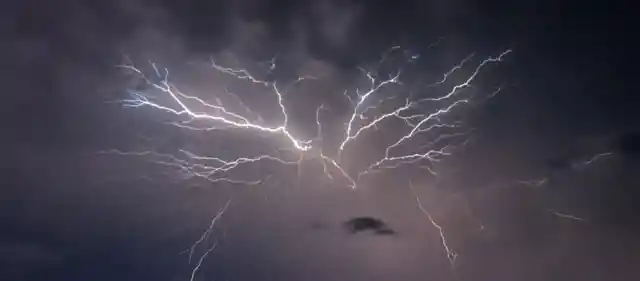

It originates from a mass of storm clouds at the height of more than 1 km and occurs during 140 to 160 nights a year, 10 hours per day and up to 280 times per hour.
Christmas Island’s Red Crabs
The Christmas Island Red Crab is a land crab species that is endemic to Christmas Island and Coco Islands in the Indian Ocean.


Authorities need to close most of the island’s roads during the migration, which lapses around one week.
Monarch Butterflies
The North American population of this type of butterfly is known to migrate to Mexico in summer and autumn, covering thousands of kilometers.
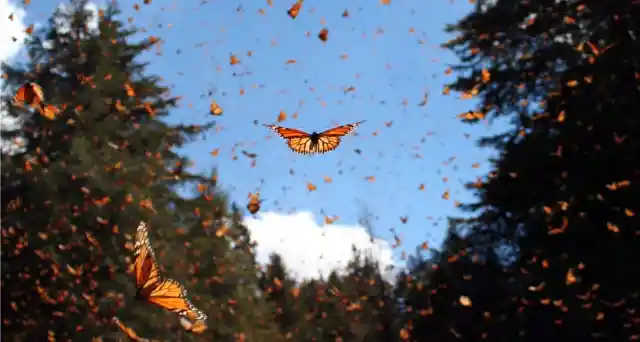
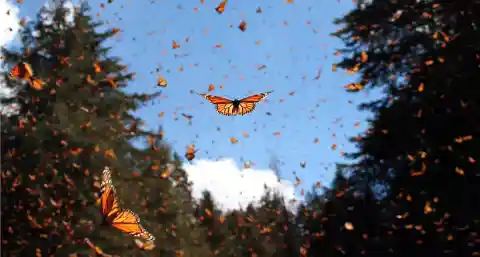
The population east of the Rocky Mountains migrates to the sanctuaries of the Mariposa Monarca Biosphere Reserve in Mexico and parts of Florida. Captive-raised monarchs appear capable of migrating to overwintering sites in Mexico, although its success rate is low. Scientists are still trying to figure out the reason behind the next phenomenon.
Dirty Thunderstorm
Also known as volcanic lightning, it occurs when lightning is produced in a volcanic plume.
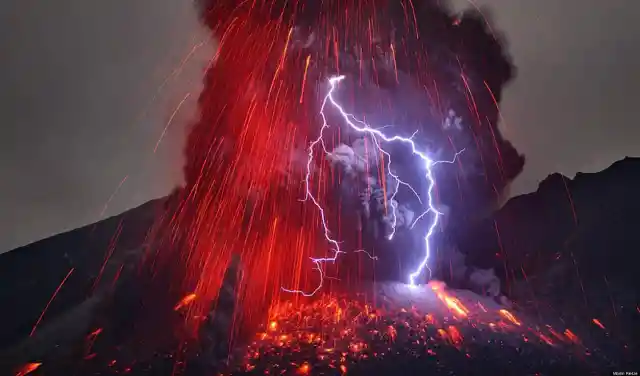
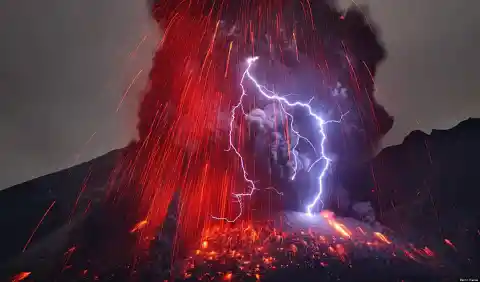
But unlike ordinary thunderstorms, volcanic lightning can also occur before any ice crystals have formed in the ash cloud.
Underwater Crop Circles
First found in 1995, these underwater circles were a mystery. In 2011 the culprit was caught: in order to woo females, the pufferfish on the southern coast of Japan created these circles.

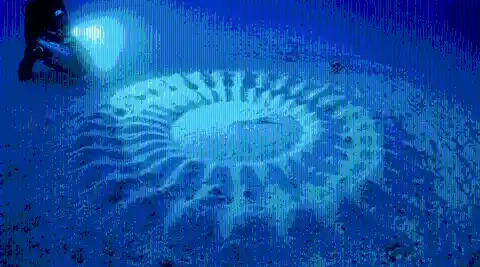
Scientists say it’s likely that the quality of the circle helps determine a female’s mate choice, though they have yet to demonstrate how. But once mating is completed, the male ceases his upkeep of the circle, and after the eggs hatch, he abandons the nest altogether.
Spherical Boulders
These spherical boulders, also known as Moeraki Boulders, are unusually large and spherical boulders lying along a stretch of Koekohe Beach on the wave-cut Otago coast of New Zealand between Moeraki and Hampden.
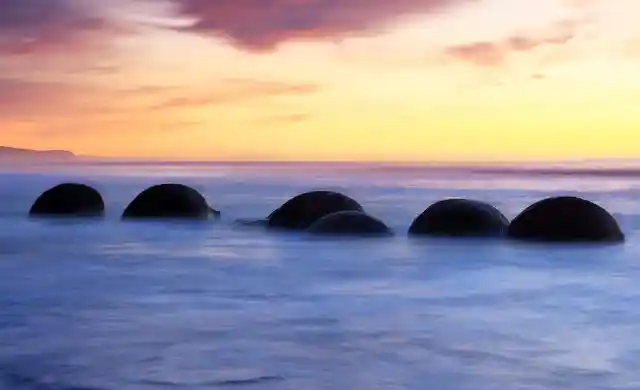

The main body of the boulders started forming in what was then marine mud, near the surface of the Paleocene sea floor. Their spherical shape indicates that the source of calcium was mass diffusion, as opposed to fluid flow. After the concretions formed, large cracks known as _septaria_ formed in them. Up next, one of the most beautiful places on Earth hides a treasure.
The Great Blue Hole
The Great Blue Hole is a large submarine sinkhole off the coast of Belize, over 300m across and 124m deep. Boats traveling to and from the Great Blue Hole attest to its popularity as a diving site.
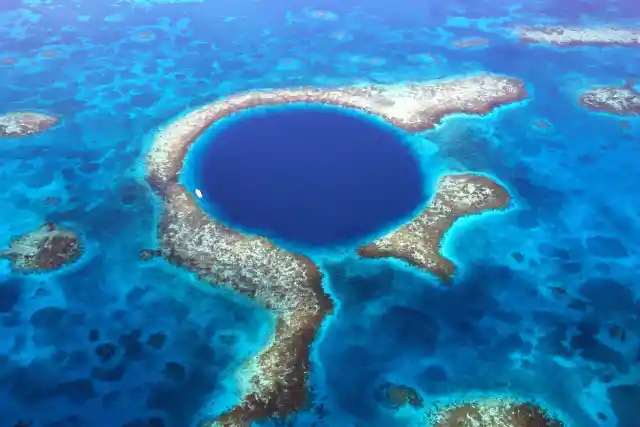
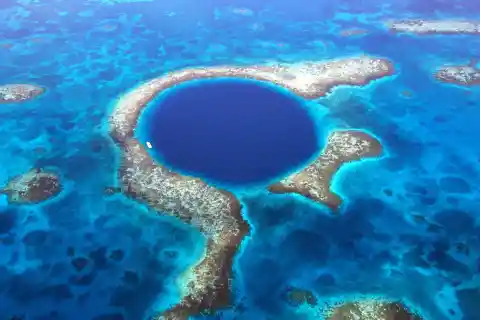
Besides modern-day marine life, this vertical cave contains remnants from its days above water. When much of Earth’s water was sequestered in glaciers, the global sea level was lower. During this time, stalactites or “dripstones” formed inside this cave, and those rocks are preserved underwater today.
The Sardine Run
Every year, between May and July, billions of sardines move north along the east coast of South Africa. This phenomenon is known as the sardine run.

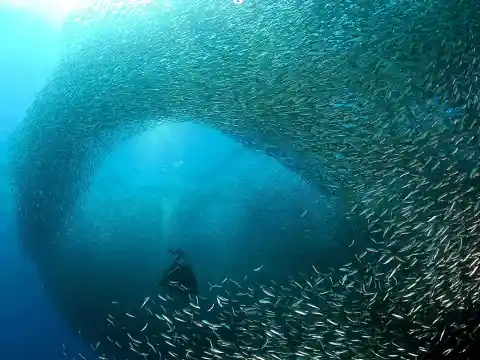
The run, containing millions of individual sardines, occurs when a current of cold water heads north from the Agulhas Bank up to Mozambique, where it then leaves the coastline and goes further east into the Indian Ocean.
The Giant’s Causeway
Declared a World Heritage Site by the UNESCO in 1986, and a National Reserve in 1987 by the Department of the Environment for Northern Ireland, the Giant’s Causeway was named as the fourth greatest natural wonder in the United Kingdom.

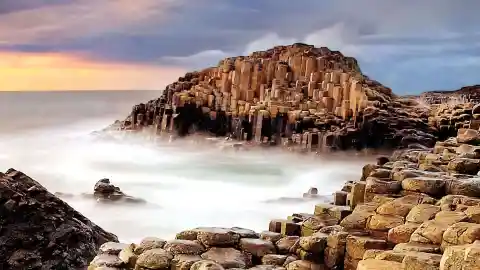
The tops of the columns form stepping stones that lead from the cliff foot and disappear under the sea. Most of the columns are hexagonal, although some have four, five, seven or eight sides. The tallest are about 12 meters high, and the solidified lava in the cliffs is 28 meters thick in places. This unexplained phenomenon scares people to this day. What do you think it is?
Sailing Stones
The sailing stones in the Death Valley in the USA are a geological phenomenon where rocks move and inscribe long tracks along a smooth valley floor without human or animal intervention. They are also known as sliding rocks, walking rocks, rolling stones, and moving rocks

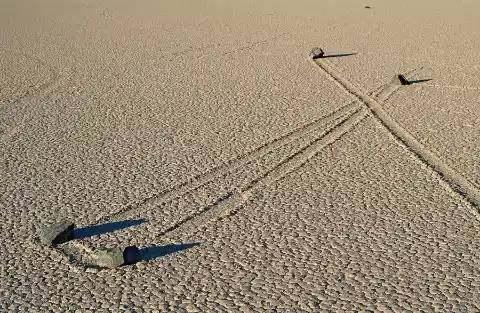
A research team calculated that under certain winter conditions in Death Valley, enough water and ice could form to float the rocks across the muddy bottom of Racetrack Playa in a light breeze, leaving a trail in the mud as the rocks moved. There’s very little difference between UFO activity and the next one…
Lenticular Clouds
Lenticular clouds are stationary clouds that form in the troposphere, typically in perpendicular alignment to the wind direction. They are often comparable in appearance to a lens or saucer.

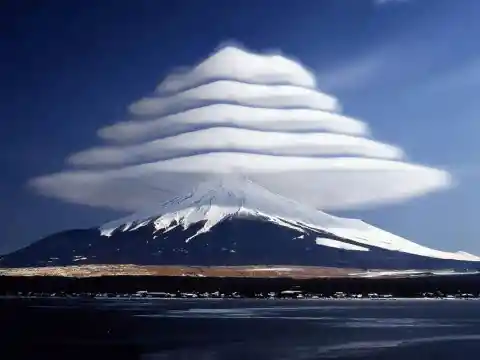
Where stable moist air flows over a mountain or a range of mountains, a series of large-scale standing waves may form on the downwind side. Lenticular clouds sometimes form at the crests of these waves. Under certain conditions, long strings of lenticular clouds can form, creating a formation known as wave clouds, which pilots avoid due to the turbulence.
Lake Natron
Lake Natron is a salt lake fed by mineral-rich hot springs like the Southern Ewaso Ng’iro River. It is the only regular breeding area in East Africa for the 2.5 million lesser flamingos that reside there. Lake Natron is fed by some springs that are rich in minerals, making the lake highly alkaline, reaching a pH of 9 to 10.5.
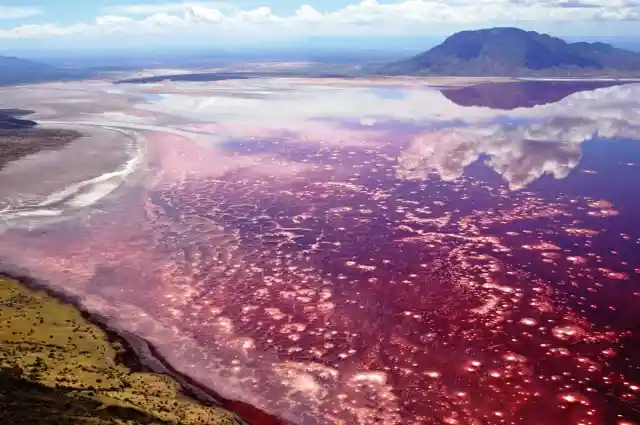

All these characteristics make Lake Natron the deadliest in the country. The crust created by the alkali salt sometimes gives the lake a red or pink hue, or even orange in the more shallow parts, by the microorganisms that live there.
Canada’s Spotted Lake
Canada’s Spotted Lake contains some of the highest quantities of magnesium sulfate, calcium and sodium sulfates in the world. The lake also contains lower amounts of silver and titanium.

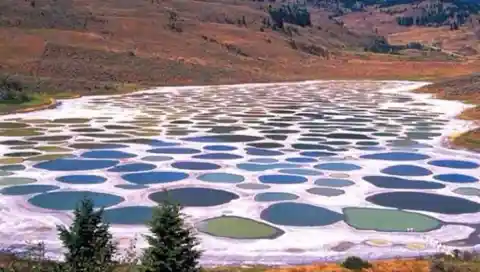
According to the British Columbia Visitor Center, spotted Lake has been considered a sacred place for centuries by the indigenous people of the Okanagan Nation. They believed that each of the different circles had different healing and medicinal properties. The lake was originally known to the First Nations of the Okanagan Valley as Kliluk.
Bioluminescent Waves
Various phytoplankton species are known to bioluminesce; when washed ashore by the tides, their chemical energy is turned into light energy.
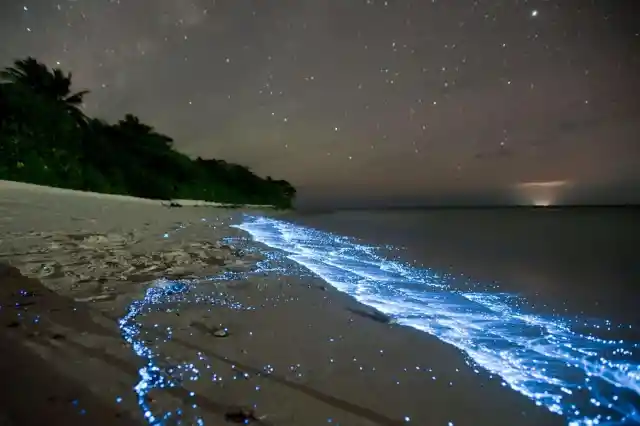

The biological process is ancient, natural and found around the world. If you’ve never seen it, it’s most easily observed on nice, warm beaches after dark. Yet again, there is little difference between UFO lights and the next phenomenon.
Light Pillars
Light Pillars are an optical phenomenon formed by the reflection of sunlight or moonlight by ice crystals present in the Earth’s atmosphere and that appear as a vertical beam of light. Since they are caused by light interaction with ice crystals, they belong to the family of halos.
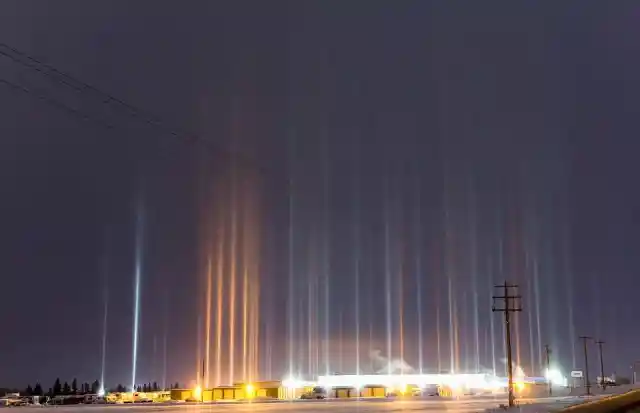
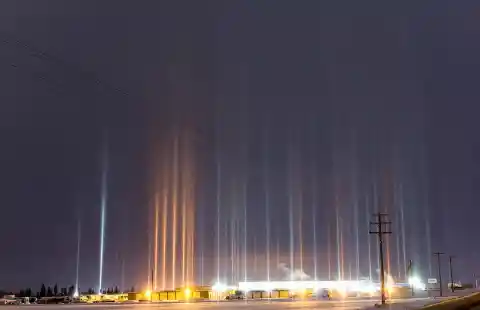
Unlike a light beam, a light pillar is not physically located above or below the light source. Its appearance of a vertical line is an optical illusion resulting from the ice crystals' collective reflection. Only those that appear to lie in a vertical line direct the light rays towards the observer. The next one might look like hippy craftsmanship, but it’s all-natural!
Rainbow Eucalyptus
Native to Indonesia, Papua New Guinea, and the Philippines, these kinds of eucalyptus shed patches of outer bark at different times of the year, darken and mature to give blue, purple, orange and then maroon tones.
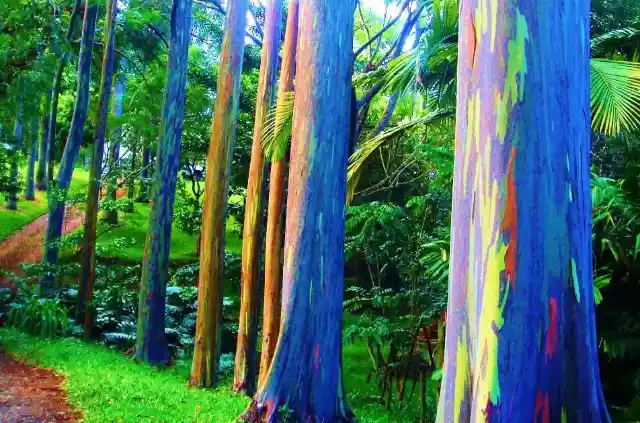
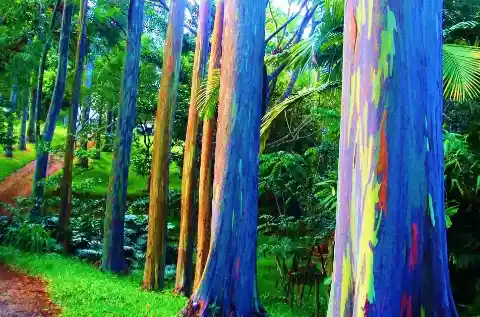
We’re used to beautiful colors in the flowers and fruits of trees and their autumn leaves, but a colored trunk is an oddity. The rainbow eucalyptus is greatly admired and is often planted deliberately, either for its appearance or other benefits.
Snow Chimneys
Currently, the most active volcano in Antarctica and the southernmost active volcano on Earth is the Mt. Erebus volcano. This volcano features one of the only five lava lakes that exist in the world.

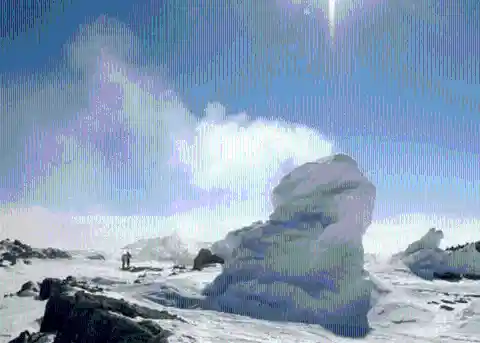
The volcanic gases heat their way through these ice caves and escape into the air to form enormous 18 meters chimneys of ice, or “fumaroles” with deadly volcanic gases pouring out their tips.